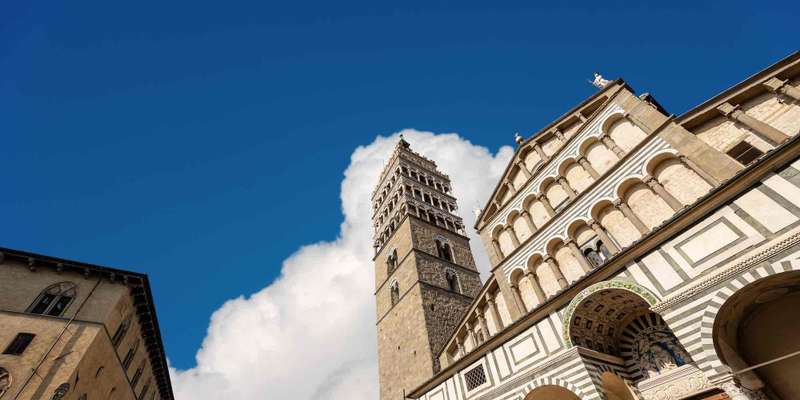- Home
- Useful Tips
- Pistoia's Romanesque churches:...
Pistoia's Romanesque churches represent some of Tuscany's finest medieval architecture, yet many travelers overlook them in favor of more famous destinations. This oversight means missing extraordinary artistic treasures and atmospheric spaces that have remained virtually unchanged for centuries. The challenge lies in knowing which churches to prioritize with limited time, understanding their historical context, and accessing their often irregular opening hours. Over 60% of day-trippers to Tuscany concentrate on just three cities, leaving Pistoia's UNESCO-recognized monuments refreshingly crowd-free. For architecture enthusiasts, these churches offer a rare opportunity to experience exquisite marble facades, intricate pulpits, and medieval frescoes without jostling through tourist groups. The quiet dignity of these sacred spaces provides not just artistic enrichment but a genuine connection to Tuscany's spiritual and cultural heritage.


Decoding Pistoia's church opening hours – when to visit without disappointment
Pistoia's ecclesiastical treasures follow complex opening schedules that baffle even seasoned travelers. The Duomo di Pistoia might close unexpectedly for religious services, while San Giovanni Fuorcivitas maintains shorter afternoon hours. Morning visits generally prove most reliable, particularly before 11am when churches often observe their longest uninterrupted access periods. Local feast days can either mean extended viewing opportunities or complete closures – the Festa di San Jacopo in July typically allows special access to normally restricted areas. Many visitors don't realize that the Baptistery operates on a separate timetable from the adjacent cathedral, causing frustration when trying to coordinate visits. Savvy travelers check the diocesan website for last-minute changes, though even these listings sometimes lag behind actual practice. A helpful local custom involves politely inquiring at nearby cafes; proprietors often know the day's unposted schedule adjustments.
San Giovanni Fuorcivitas – why this miniature masterpiece deserves your full attention
The modest size of San Giovanni Fuorcivitas belies its extraordinary artistic significance. This 12th-century church packs more masterpieces per square meter than many Florentine museums, beginning with its distinctive striped marble facade. The real marvel awaits inside – Giovanni Pisano's pulpit represents one of medieval sculpture's crowning achievements, its narrative panels bursting with emotional intensity rarely seen in Romanesque art. Most visitors spend just fifteen minutes here, missing subtle details like the church's original medieval confessionals or the exquisite glazed terracotta by Andrea della Robbia. Lighting conditions dramatically affect your experience; come near midday when sunlight illuminates the pulpit's north side, revealing textures invisible in morning shadows. The adjacent cloister (often overlooked) provides context about the church's original role as a waystation for pilgrims traveling the Via Francigena. Those lingering after tour groups depart might witness the caretaker demonstrating the remarkable acoustics that make this a favored venue for early music concerts.
The Duomo complex decoded – navigating Pistoia's religious heart
Pistoia's cathedral square forms a harmonious ensemble where every building contributes to the medieval narrative. The Duomo itself showcases a rarely noticed timeline of architectural styles – its Pisan-Romanesque facade contrasts with Gothic elements added after the 13th-century earthquake. Many visitors bypass the silver altar of Saint James, a breathtaking example of medieval metalwork that took two centuries to complete. The adjacent Bishop's Palace courtyard offers free access to remarkable Romanesque capitals repurposed from earlier structures. Budget-conscious travelers should note that purchasing the combined cathedral ticket provides access to the Diocesan Museum's underrated collection of liturgical art. Evening visits during summer months reveal an unexpected benefit – the piazza's lighting scheme accentuates architectural details invisible by daylight, while summer concerts often utilize the cathedral's exceptional acoustics. Those studying the facade will spot weathering patterns that reveal which sculptures are originals versus 19th-century restorations.
Beyond the guidebooks – three lesser-known churches with astonishing details
Pistoia's secondary churches reward those willing to venture slightly off the beaten path. Sant'Andrea boasts a pulpit by Giovanni Pisano's father Nicola, allowing fascinating comparisons between their styles just minutes apart. The recently restored San Bartolomeo in Pantano preserves 13th-century graffiti left by medieval pilgrims – look for ship carvings near the entrance left by travelers praying for safe passage. Most surprising might be San Pier Maggiore, its deconsecrated nave now hosting art exhibitions that juxtapose contemporary works against Romanesque architecture. These sites share one advantage – they're staffed by passionate volunteers who share stories you won't find in guidebooks. The key to access lies in timing; weekdays between 3-5pm often find attendants present and happy to point out overlooked details. Those interested in architectural materials should examine the varied stone types used in each church's construction, telling silent stories about medieval trade routes and local geology.
